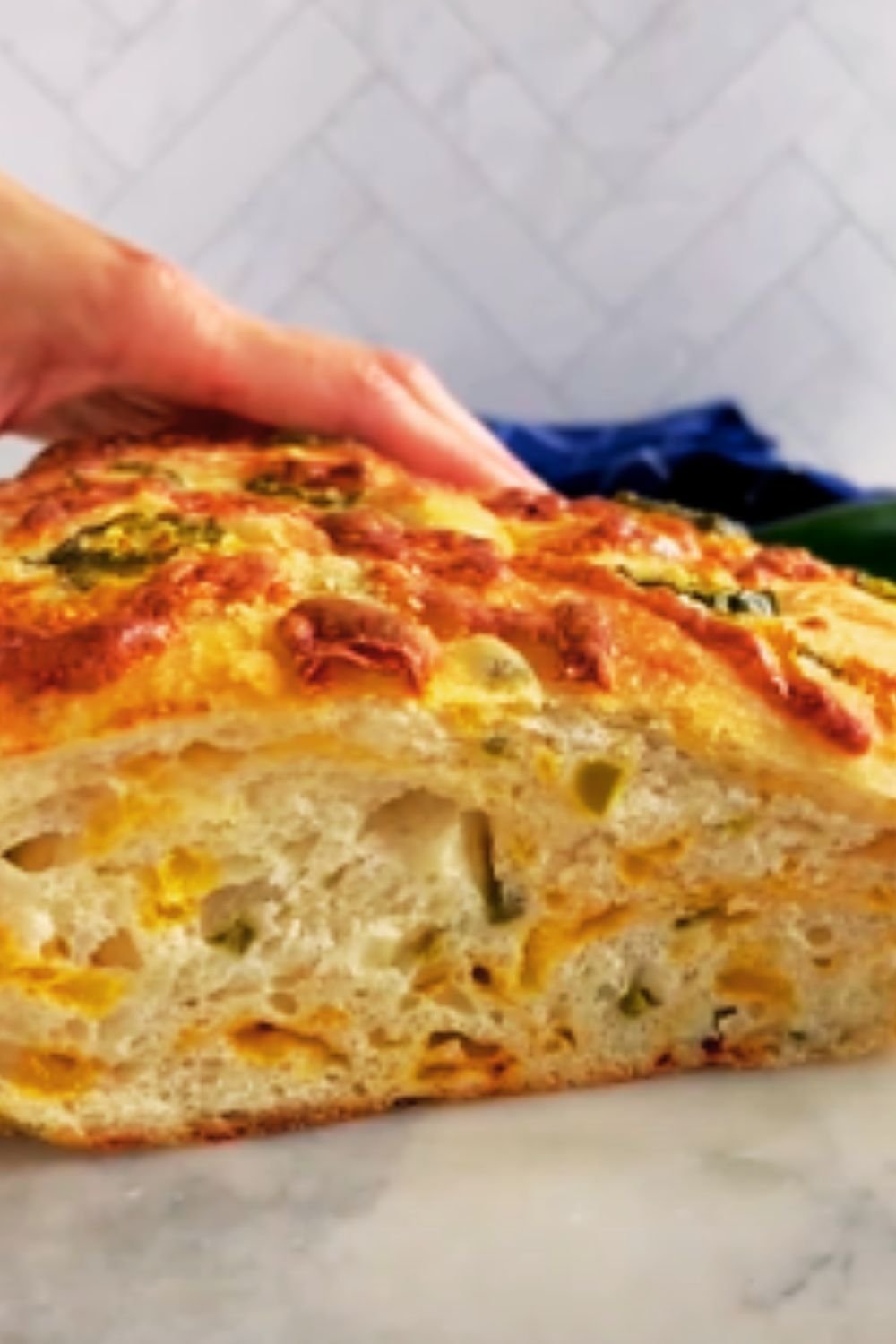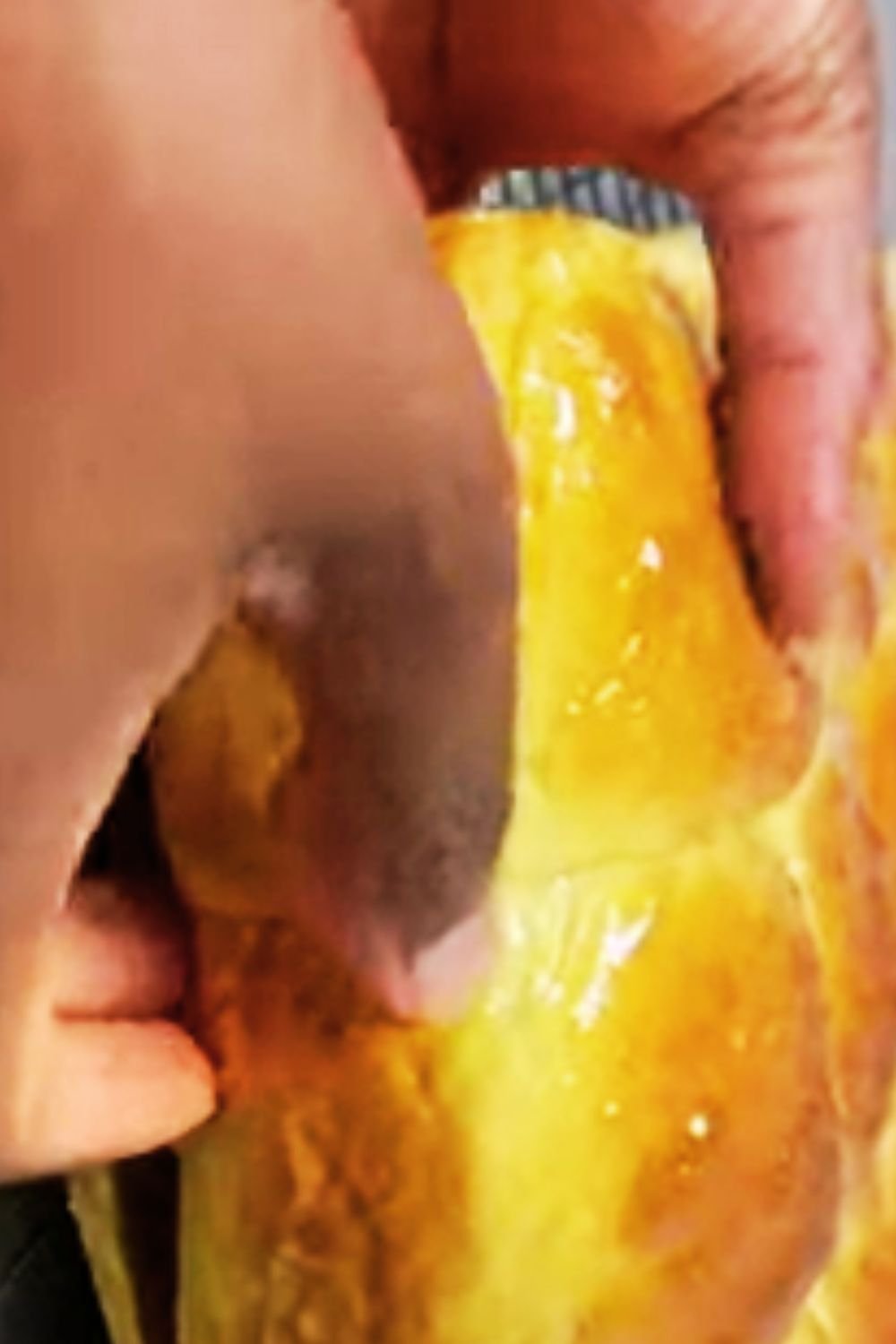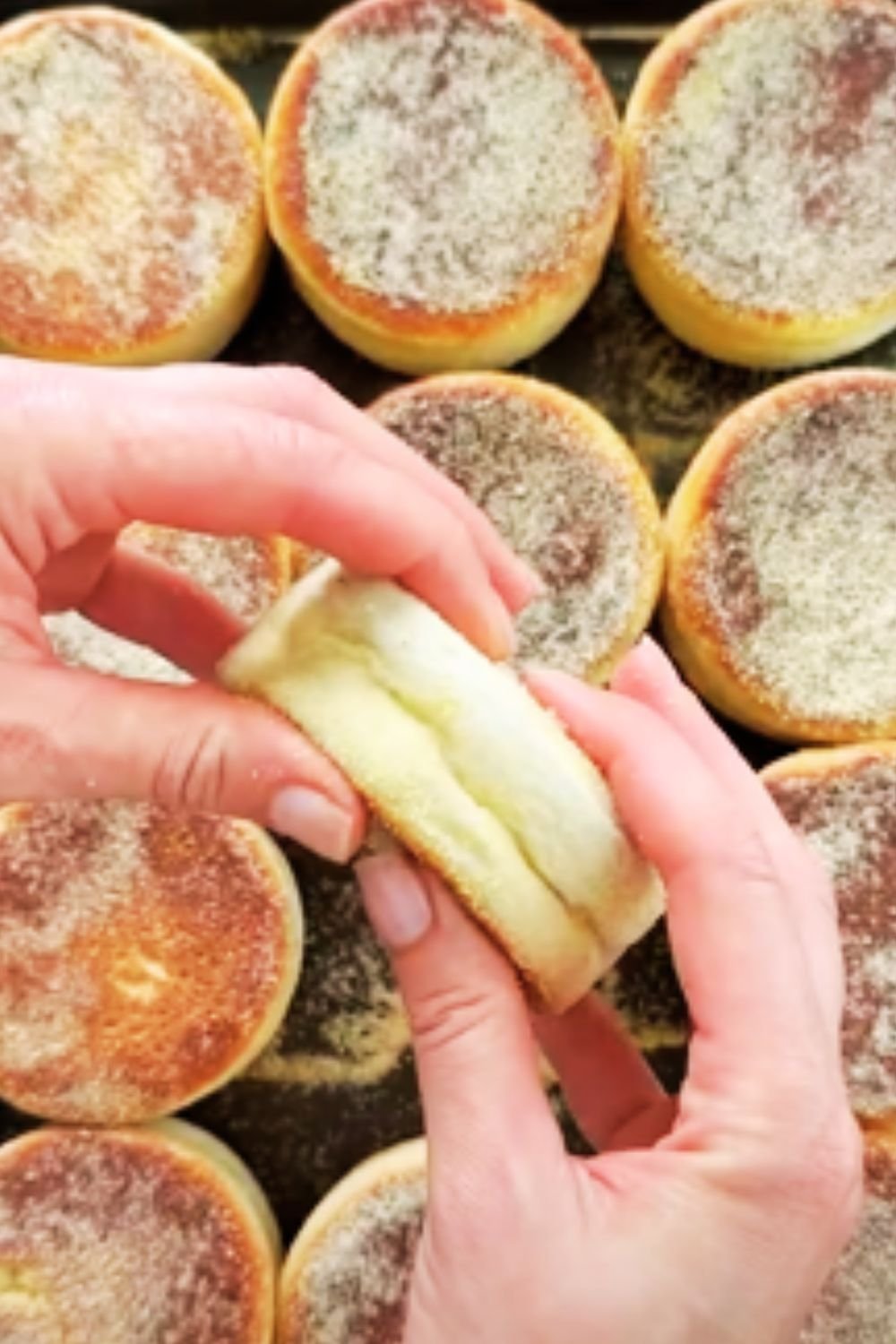There’s something magical about pulling a perfectly baked loaf of sourdough bread from the oven. That crackling crust, the tangy aroma, and the sense of accomplishment that comes with creating something so fundamental yet so magnificent. But today, I’m taking my sourdough game to a whole new level with this No-Knead Jalapeño Cheddar Sourdough recipe.
As someone who’s been baking sourdough for over a decade, I’ve experimented with countless variations, but this spicy, cheesy masterpiece has become my family’s absolute favorite. The beauty of this recipe lies in its simplicity: no kneading required! Yet the result is a bakery-quality bread with pockets of melted cheddar and the perfect kick of jalapeño heat.
Whether you’re a sourdough veteran or just starting your journey, this recipe offers an accessible path to an impressive loaf that will have everyone asking for seconds. The minimal hands-on time makes it perfect for busy days, while the complex flavors will convince anyone that you spent hours laboring in the kitchen.
The Magic of Sourdough Starter
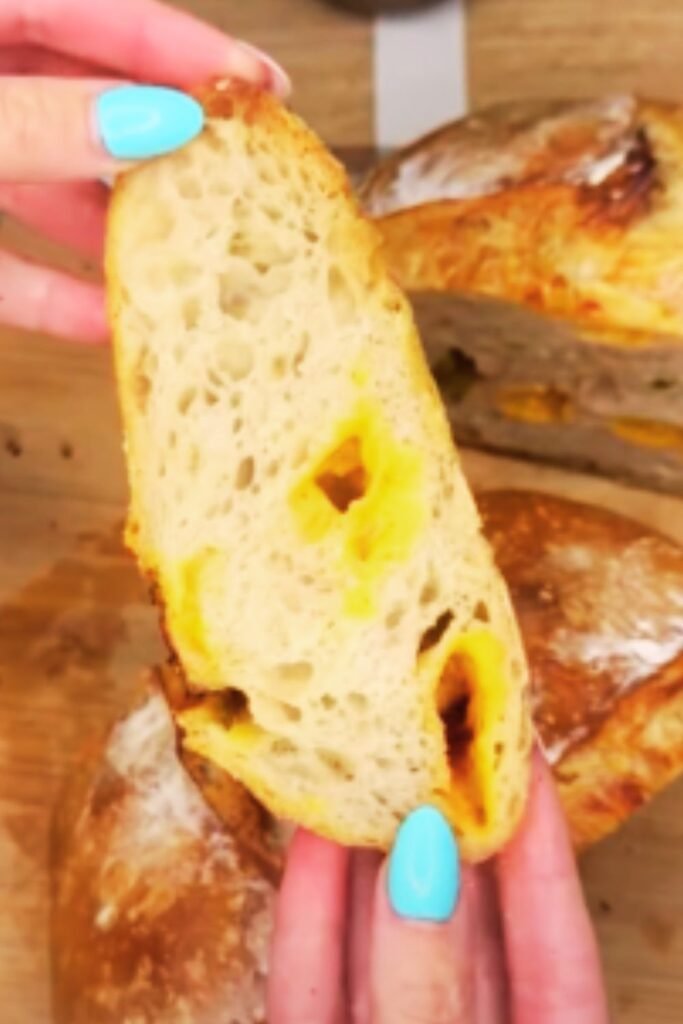
Before we dive into the recipe, let me share a few words about the heart of any sourdough bread: the starter. My starter, affectionately named “Bubbles,” has been with me for seven years now, developing more complexity and character with each feeding.
A sourdough starter is simply a mixture of flour and water that captures wild yeasts and beneficial bacteria from the environment. These microorganisms are what give sourdough its distinctive tangy flavor and help it rise without commercial yeast. If you don’t have a starter yet, don’t worry! I’ve included instructions for creating your own further down.
The key to this recipe’s success is using a mature, active starter. When your starter is ready, it should:
- Double in volume within 4-6 hours after feeding
- Have a pleasant, yogurt-like sour smell
- Show plenty of bubbles throughout
- Pass the “float test” (a small amount should float when dropped in water)
Ingredients and Equipment
For the Bread:
- 500g (4 cups) bread flour
- 100g (¾ cup) whole wheat flour
- 425g (1¾ cups) filtered water at room temperature
- 100g (½ cup) active sourdough starter
- 10g (1½ tsp) salt
- 170g (1½ cups) sharp cheddar cheese, cubed
- 2-3 jalapeños, deseeded and diced (adjust based on heat preference)
- 2 tbsp cornmeal for dusting (optional)
Equipment:
- Digital kitchen scale (for precise measurements)
- Large mixing bowl
- Dough scraper
- Banneton or proofing basket
- Dutch oven or cast iron combo cooker
- Sharp knife or bread lame for scoring
- Cooling rack
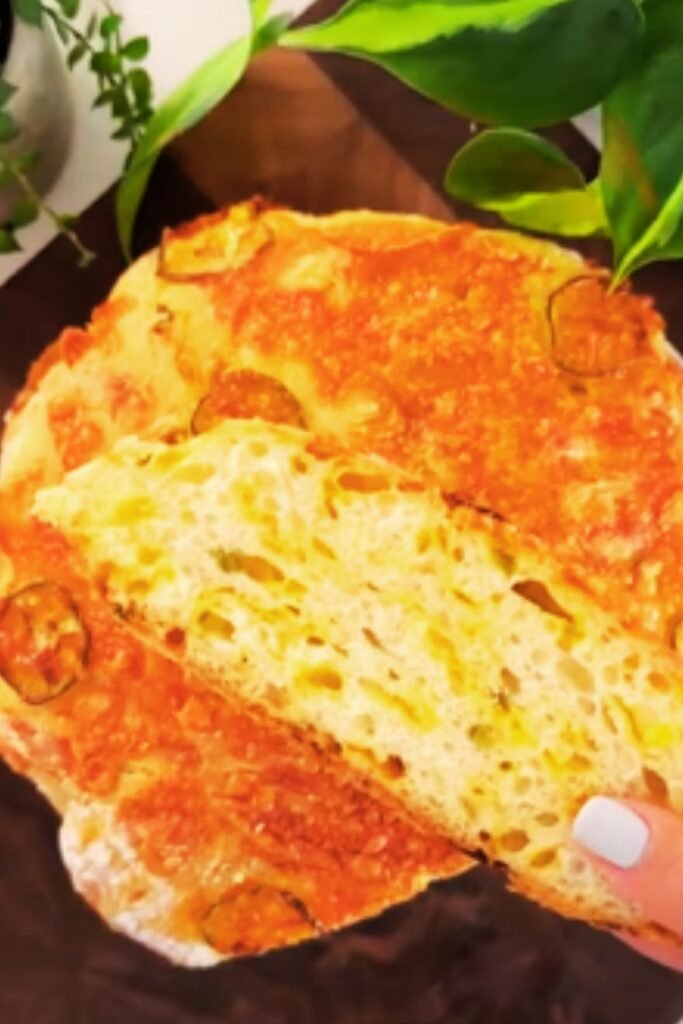
Step-by-Step Process
Day 1: Prepare Your Starter and Dough
Morning: Feed Your Starter
- Discard all but 50g of your existing starter
- Add 50g of whole wheat flour, 50g of bread flour, and 100g of filtered water
- Mix well and let sit at room temperature (70-75°F) for 6-8 hours until bubbly and active
Evening: Make the Dough
- In a large bowl, combine both flours and mix well
- Add the water and mix until no dry flour remains
- Cover and let rest for 30 minutes (this is called the autolyse)
- Add the active starter and salt, then mix by hand using the pincer method:
- Wet your hand
- Use your thumb and forefinger like a pincer to cut through the dough
- Fold the dough over itself repeatedly until fully incorporated
- Cover and let rest for 30 minutes
Add the Jalapeños and Cheddar
This is where our bread gets its personality! After the initial rest:
- Dice the jalapeños finely, removing seeds and membranes for less heat (or keep some for extra spice)
- Cut the cheddar into small cubes (about ¼ inch)
- Gently spread the dough out into a rectangle
- Sprinkle the jalapeños and cheddar evenly over the surface
- Fold the dough over itself several times to incorporate the ingredients
- Cover and let rest for 30 minutes
The Stretch and Fold Technique
Instead of traditional kneading, we’ll use the stretch and fold method to develop gluten:
- With wet hands, grab one side of the dough
- Stretch it up and fold it over to the opposite side
- Rotate the bowl 90 degrees and repeat
- Do this for all four sides of the dough
- Cover and let rest for 30 minutes
- Repeat this process 3-4 more times, with 30-minute rests in between
After the final stretch and fold, cover the bowl and let the dough bulk ferment at room temperature for 4-6 hours, or until it has increased in volume by about 50% and appears bubbly.
Shape the Dough
- Gently turn the dough out onto a lightly floured surface
- Being careful not to deflate it too much, shape into a round (boule) by pulling the edges toward the center
- Let it rest, seam side down, for 20 minutes
- For the final shaping, flip the dough over and pull the edges toward the center again
- Flip it back over and, using cupped hands, rotate the dough on the counter to create tension on the surface
- Place the dough, seam side up, in a flour-dusted banneton or a bowl lined with a well-floured kitchen towel
Cold Fermentation
Transfer the shaped dough to the refrigerator for 12-16 hours. This slow, cold fermentation:
- Develops more complex flavors
- Makes the dough easier to handle and score
- Creates a better crust and crumb structure
- Fits into a busy schedule (you can bake it the next day)
Day 2: Baking Day
Prepare for Baking
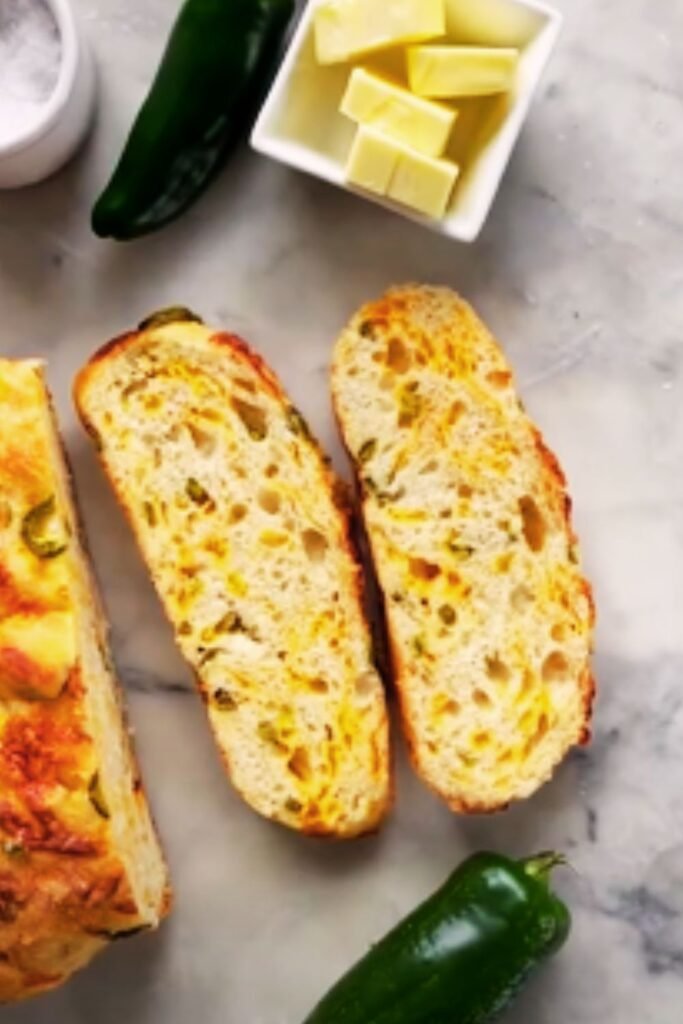
- Place your Dutch oven or combo cooker in the oven and preheat to 500°F (260°C) for at least 45 minutes
- When ready to bake, remove the dough from the refrigerator
- Cut a piece of parchment paper slightly larger than your dough
- Turn the dough out onto the parchment paper (seam side down)
- Dust the top lightly with flour and gently rub it over the surface
Score the Dough
Scoring isn’t just decorative—it allows the bread to expand properly during baking:
- Using a sharp knife, bread lame, or razor blade, make a decisive cut about ¼-½ inch deep
- For this jalapeño cheddar bread, I like to make a simple “X” or a few diagonal slashes
Baking
- Carefully remove the preheated Dutch oven from the oven
- Lower the dough on the parchment paper into the Dutch oven
- Cover with the lid and return to the oven
- Immediately reduce the temperature to 450°F (230°C)
- Bake covered for 25 minutes (this creates steam for a better crust)
- Remove the lid and bake for another 20-25 minutes until deeply golden brown
- The internal temperature should read 205-210°F (96-99°C) when done
Cooling
This is perhaps the hardest part—
